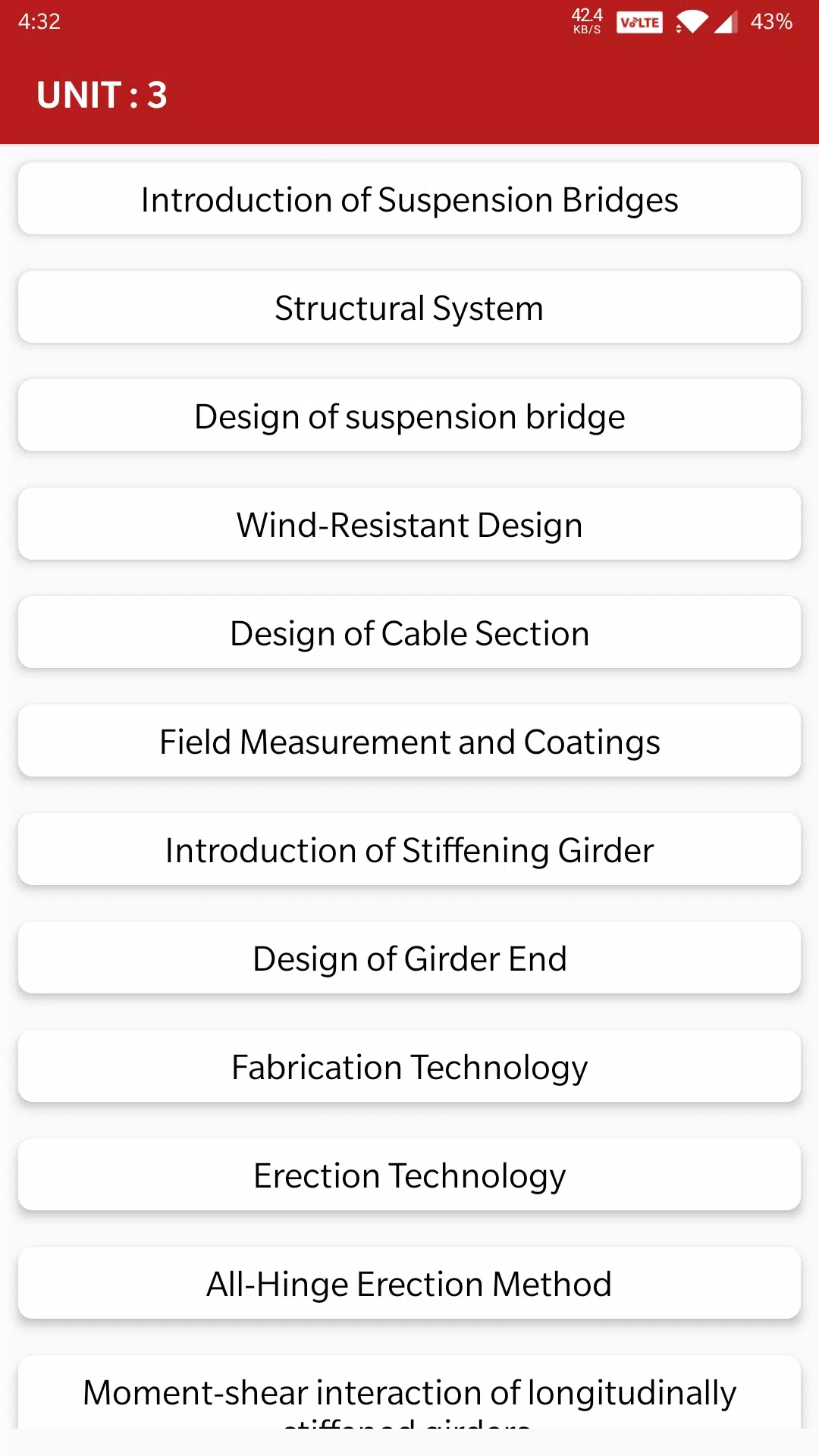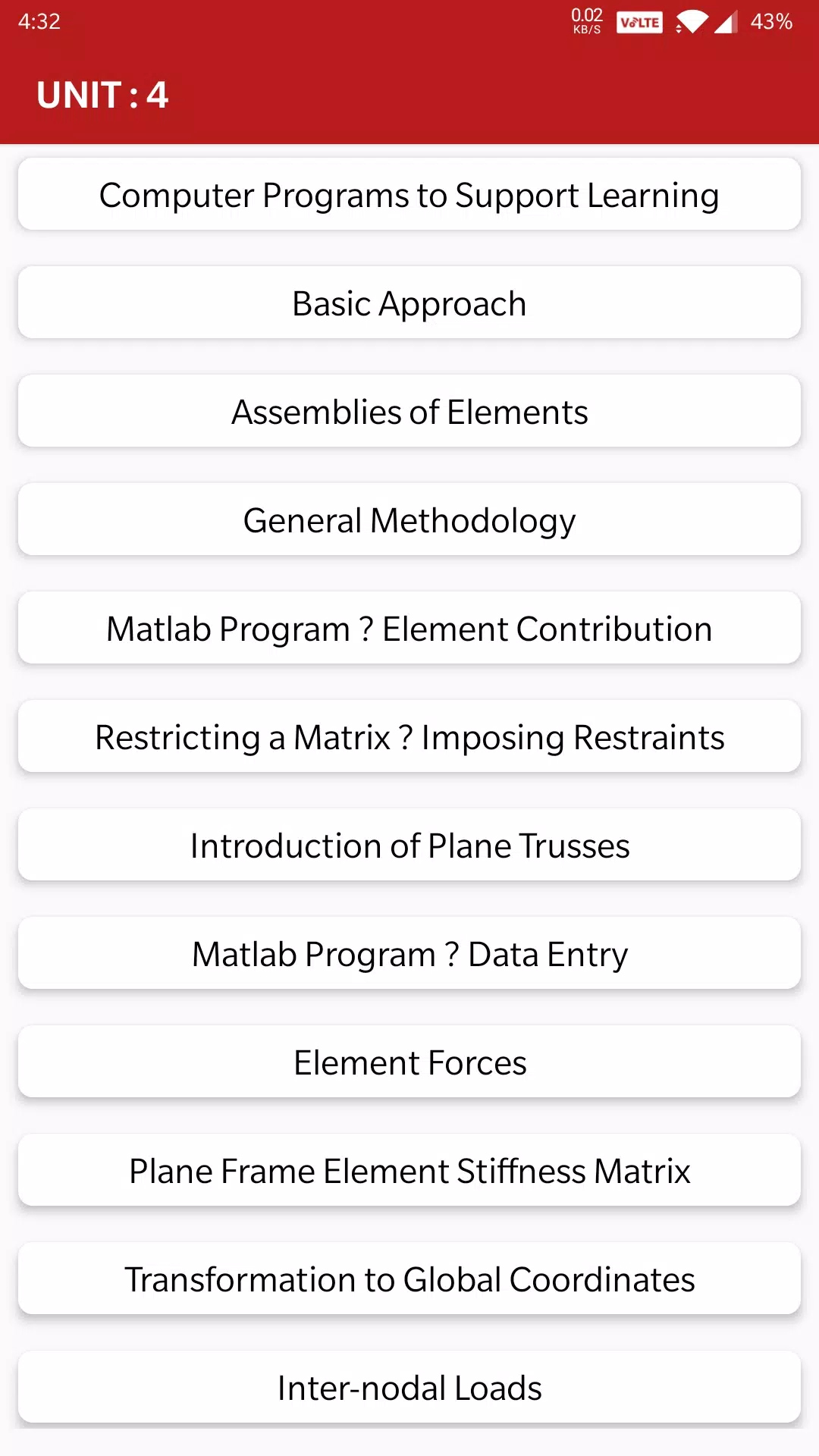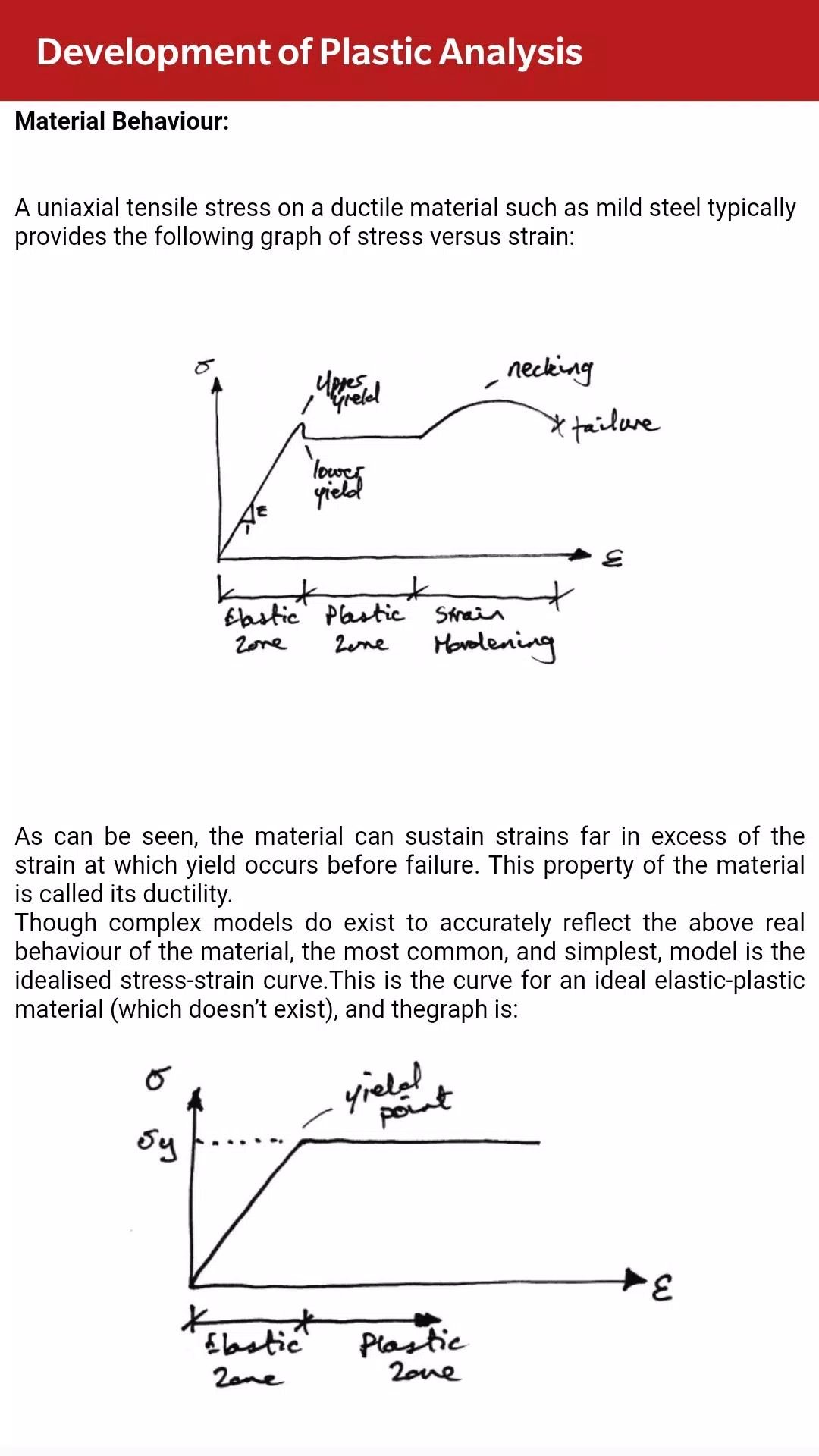Complete Handbook of Structural Analysis: Learn a Topic in a Minute
Introduction to Structural Analysis
Welcome to the ultimate free handbook for Structural Analysis, tailored to cover the essential topics, notes, and materials needed for mastering this course. This comprehensive resource is perfect for engineering science students and professionals looking to deepen their understanding of structural mechanics.
Overview of the App
Our app features an extensive collection of 110 topics, complete with detailed notes, diagrams, equations, formulas, and course material, organized into 5 chapters. It's designed for quick learning, revision, and as a handy reference during exams and interviews, covering most related topics with detailed explanations of all basic concepts.
Key Topics Covered
- Development of Plastic Analysis: Understand the evolution and application of plastic analysis in structural engineering.
- Interpretation of Stiffness Matrix: Learn how to interpret the stiffness matrix, a fundamental concept in finite element analysis.
- Truss Element Stiffness Matrix: Dive into the specifics of calculating the stiffness matrix for truss elements.
- Introduction: Start with the basics of structural analysis, setting the stage for more advanced topics.
- Mohr’s First Theorem (Mohr I): Explore the principles of Mohr's first theorem and its applications.
- Mohr’s Second Theorem (Mohr II): Understand the implications of Mohr's second theorem in structural analysis.
- Application to Determinate Structures: See how structural analysis principles apply to determinate structures.
- Finding Deflections: Learn the methods for calculating deflections in structural elements.
- Application to Indeterminate Structures: Apply structural analysis techniques to more complex, indeterminate structures.
- Find the location of the maximum deflection: Techniques to identify where maximum deflection occurs in a structure.
- Continuous Beams: Introduction: Begin your journey into the analysis of continuous beams.
- Analysis of Continuous Beams: Detailed methods for analyzing continuous beams.
- Incorporation of Moment Due to Reactions: How to include moments due to reactions in your analysis.
- Pressure Line due to Prestressing Force: Understand the concept of pressure lines in prestressed structures.
- METHOD OF CONSISTENT DEFORMATION: Basic Concept: Grasp the fundamentals of the method of consistent deformation.
- Choice of Released Structures: Learn how to select the most appropriate released structures for analysis.
- Compatibility Equations for General Case: Dive into the compatibility equations crucial for structural analysis.
- Vector of kinematical conditions: Understand the role of kinematic conditions in structural analysis.
- METHOD OF SLOPE-DEFLECTION EQUATIONS: Master the slope-deflection method for analyzing structures.
- Computation of Fixed-end Moments: Techniques for calculating fixed-end moments in beams.
- THE MOMENT DISTRIBUTION METHOD: Learn the moment distribution method for structural analysis.
- DISTRIBUTION FACTOR: Understand the importance of distribution factors in the moment distribution method.
- STEPS INVOLVED IN MOMENT DISTRIBUTION METHOD: Step-by-step guide to applying the moment distribution method.
- Strain Energy: Explore the concept of strain energy and its role in structural analysis.
- Beams: Comprehensive coverage of beam analysis in structural engineering.
- Analysis of two-hinged arch: Methods for analyzing two-hinged arches.
- Influence line diagram: Understand the use of influence line diagrams in structural analysis.
- Symmetrical two hinged arch: Specific analysis techniques for symmetrical two-hinged arches.
- Temperature effect: Consider the impact of temperature on structural elements.
- Torque and thrust force in drilling: Analysis of torque and thrust forces in drilling operations.
- MODEL OF DRILLING: Understand the structural model used for drilling analysis.
- Introduction of Suspension Bridges: Begin your study of suspension bridge design and analysis.
- Structural System: Overview of the structural systems used in bridge design.
- Design of suspension bridge: Detailed design considerations for suspension bridges.
- Wind-Resistant Design: Learn about designing structures to withstand wind forces.
- Design of Cable Section: Techniques for designing cable sections in suspension bridges.
- Field Measurement and Coatings: Importance of field measurements and protective coatings in structural design.
- Introduction of Stiffening Girder: Understand the role of stiffening girders in bridge design.
- Design of Girder End: Specific design considerations for girder ends.
- Fabrication Technology: Explore the technologies used in structural fabrication.
- Erection Technology: Learn about the methods used for erecting structural components.
- All-Hinge Erection Method: Details on the all-hinge method of structural erection.
- Moment-shear interaction of longitudinally stiffened girders: Understand the interaction between moments and shear in stiffened girders.
- EUROCODE DESIGN PROVISIONS: Overview of Eurocode standards for structural design.
- FINITE ELEMENT MODELING: Introduction to finite element modeling in structural analysis.
- NON-LINEAR FINITE ELEMENT STUDY: Explore non-linear analysis using finite element methods.
- Alternative Form of Slope-deflection Equations: Learn alternative formulations of slope-deflection equations.
- Sign Convention: Understand the importance of sign conventions in structural analysis.
- Computation of Fixed-end Moments: Further details on computing fixed-end moments.
- Slope-deflection Equations for Special Members: Application of slope-deflection equations to special structural members.
- Slope-deflection Equations for Special Members: Additional insights into slope-deflection equations for unique cases.
- Symmetric member and Anti-symmetric member: Analysis techniques for symmetric and anti-symmetric structural members.
- Analysis of Structures by Slope-deflection Equations: Comprehensive guide to analyzing structures using slope-deflection equations.
- End rotations and sway angle of members: Understanding end rotations and sway angles in structural members.
- Determination of sway angle by instantaneous center of rotations (ICR): Techniques for determining sway angles using ICR.
- Set up equilibrium equations: How to set up equilibrium equations for structural analysis.
- Equilibrium equations associated with sway degrees of freedom: Specific equilibrium equations for sway degrees of freedom.
- Equilibrium equations associated with sway degrees of freedom: Further exploration of sway-related equilibrium equations.
App Features
- Chapter-wise Complete Topics: Organized for easy navigation and learning.
- Rich UI Layout: A user-friendly interface designed for optimal learning experience.
- Comfortable Read Mode: Ensures readability and ease of use.
- Important Exam Topics: Highlights key topics for exam preparation.
- Very Simple User Interface: Intuitive and easy to navigate.
- Cover Most Of Topics: Comprehensive coverage of structural analysis topics.
- One Click Get Related All Book: Access related books with a single click.
- Mobile Optimized Content: Content optimized for mobile devices.
- Mobile Optimized Images: Images designed for clear viewing on mobile screens.
Utilizing the App
This app is your go-to resource for quick reference and revision. With it, you can complete the revision of all concepts within several hours, making it an invaluable tool for both learning and exam preparation.
Feedback and Support
We value your feedback! Instead of giving us a lower rating, please email us your queries, issues, and suggestions. We are committed to considering your input for future updates and will be happy to address any concerns you may have.
By using this app, you'll be well-equipped to master the complex world of structural analysis in no time.




































